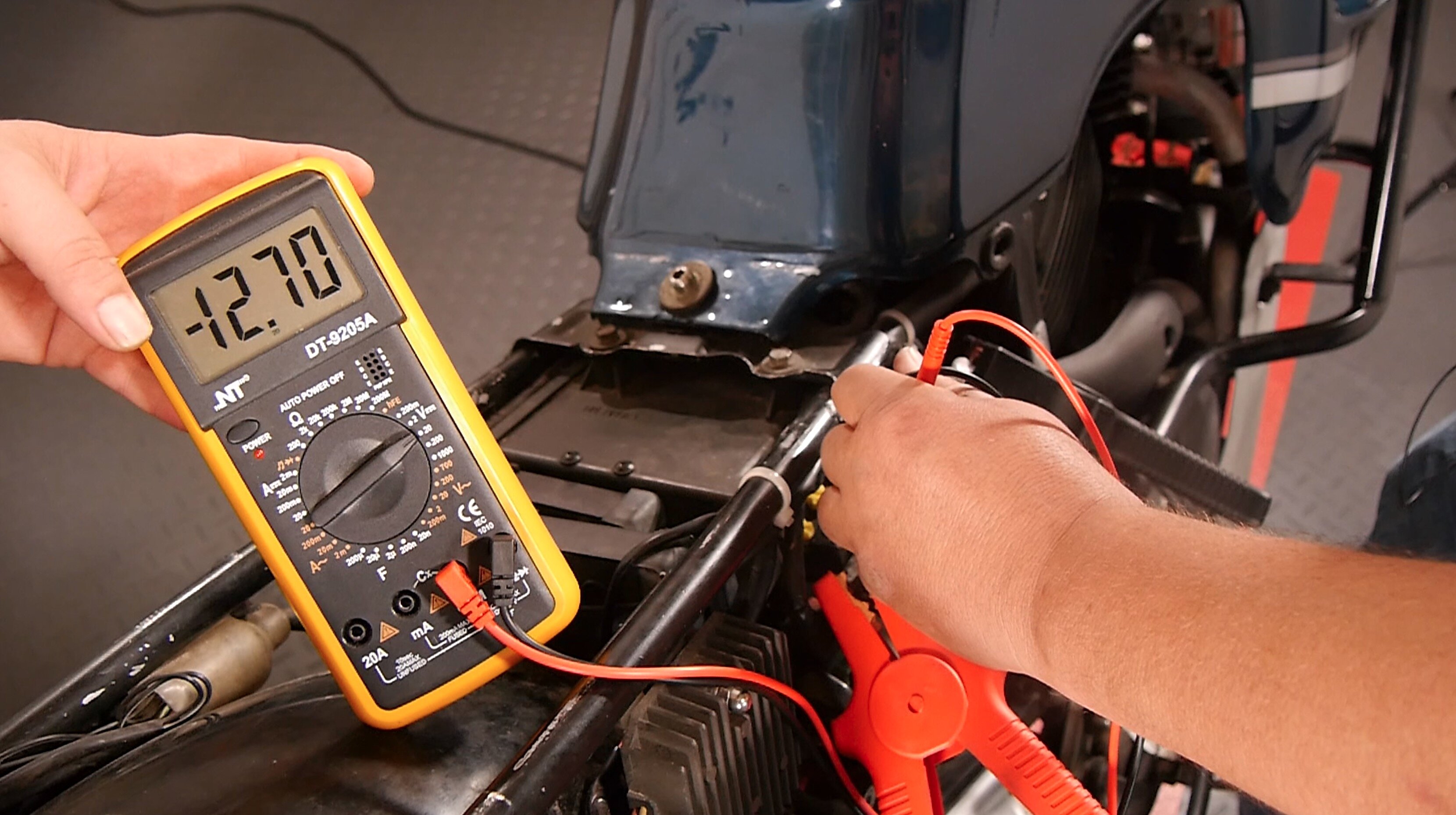voltage regulator
Regulator Rectifier Voltage Regulator
Vintage voltage regulator - rectifier check
If the measured voltage at the battery exceeds approx. 14.4 V when increasing the engine speed, the voltage regulator is defective.
On oldtimers you can still find mechanically adjustable regulator models and with separate rectifier. These regulators must be readjusted in the event of overvoltage.
Test separate rectifier
Disconnect rectifier.
Resistance measurement with multimeter ( diode measurement ),
Measured values between plus and all other lines.
Likewise between minus and all other lines, including one polarity change each (reconnect measuring line).
Measurement in one direction, e.g. in forward direction, should indicate a resistance value approx. 8-10 times lower than in the other direction = reverse direction.
If this is not the case, the rectifier is defective.
Current voltage regulators have the rectifier and regulator in one housing.
Current voltage regulators on the motorcycle
Shunt regulator ( cross regulator )

For permanently excited alternators, so-called shunt regulators ( transverse regulators ) are usually used for voltage conversion.
The transverse regulator converts excess energy supplied by the alternator via a resistor (shunt) into heat.
Problems
Overheating of the voltage regulator and this regulation also converts some of the power in the stator winding into heat.
The alternator always runs at 100% with this regulation.
With strong alternators (e.g. Aprilia RSV1000 approx. 500W) it can come by this continuous load to the overheating of the insulation of the winding wire and thereby to short circuits in the coil towers (windings).
Shunt regulators are designed in thyristor or MOSFET technology.
Due to the MOSFET design of the controller, less power losses occur, so the controller does not get as hot as with thyristor technology.
Longitudinal controller
Longitudinal regulators work differently:
When the battery is full, the voltage regulator interrupts the stator circuit, which means that the alternator no longer supplies current.
The temperature of the stator is thus lower and overheating of the coil towers less likely.
Only approx. 50% current load on the stator winding when using series instead of shunt regulator.
Longitudinal controller art.no.: MTP18088, with adapter plug set art.no.: MTP18088SET (similar in design to SH847AA).
This longitudinal regulator also works at higher speeds and currents without problems (short-time load up to approx. 50A at 13.5V tested by us).
Checks for fault location in case of charging problems
Test all contacts and cables from the voltage regulator, alternator and on the battery.
Are the cables properly connected to the battery with clean contacts?
Are the cables chafed or scorched?
Are the connectors scorched?
Ground connections not oxidized?
Are the voltage regulator and alternator connectors tight and clean?
Is there a leakage current? ( leakage current less than 1 mA )
Failures due to a cell short circuit of the battery
1. the battery can suddenly discharge.
2. if the battery does not cause a short circuit, all measured values are correct.
3. the voltage regulator is overloaded by a short-circuit in the battery.
4. the battery can be charged again (probably the short circuit is not effective).
Measure step by step
Motorcycle engine is off, voltage at the battery ( idle voltage approx. 12,5V -12,9V )
Voltage at the battery when starting ( approx. 10V - 11V )
Engine is running over 3000 rpm, voltage at the battery without consumers ( approx. 13,5V - 14,5V ) at over 14,5V the regulator is broken.
Voltage at the battery with consumers switched on ( approx. 12,6V- 14V below 12,5V is possibly the Lima defective )
Engine is off and if you switch on a consumer (e.g. light) the battery voltage collapses below 11V. Probably the battery is defective.
Or typical ground fault / corrosion or loosened battery contacts!
Collection of terms:
Engine stalls, motorcycle stops, motorcycle won't start, engine won't start, battery boils over, battery blows up, battery dead, no charge voltage on battery, not enough voltage, charge controller, dynamo.